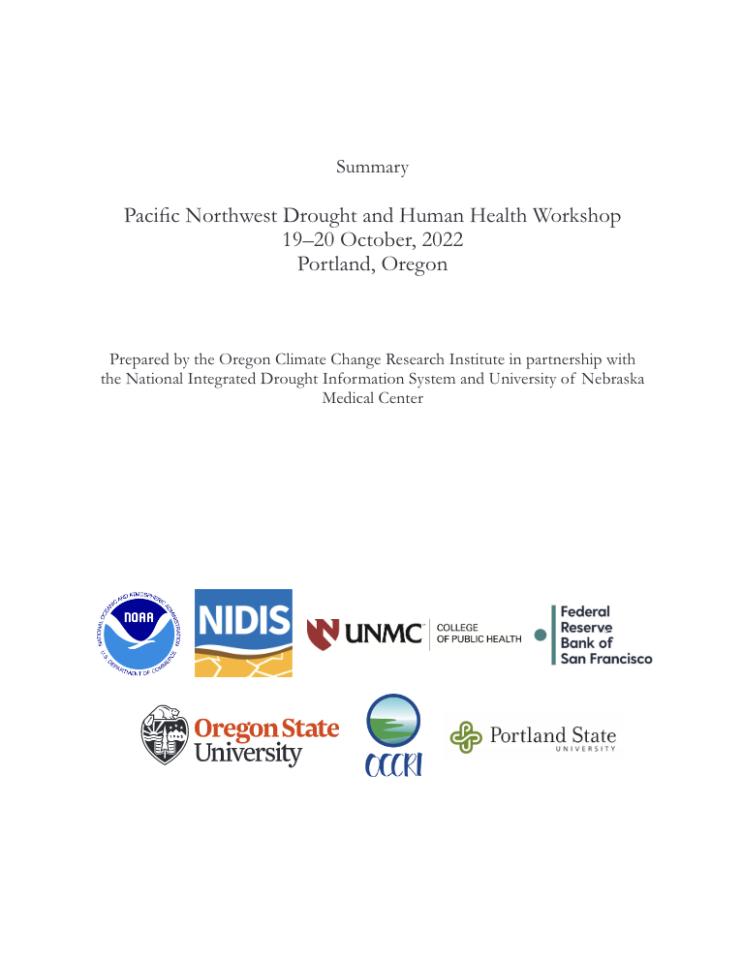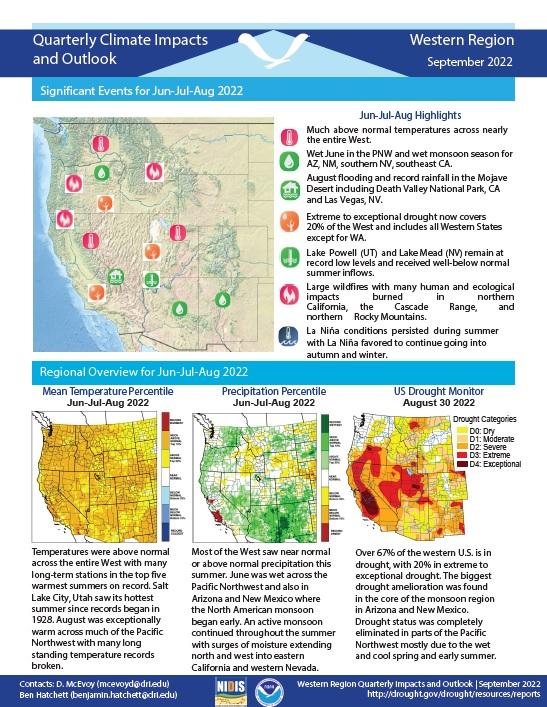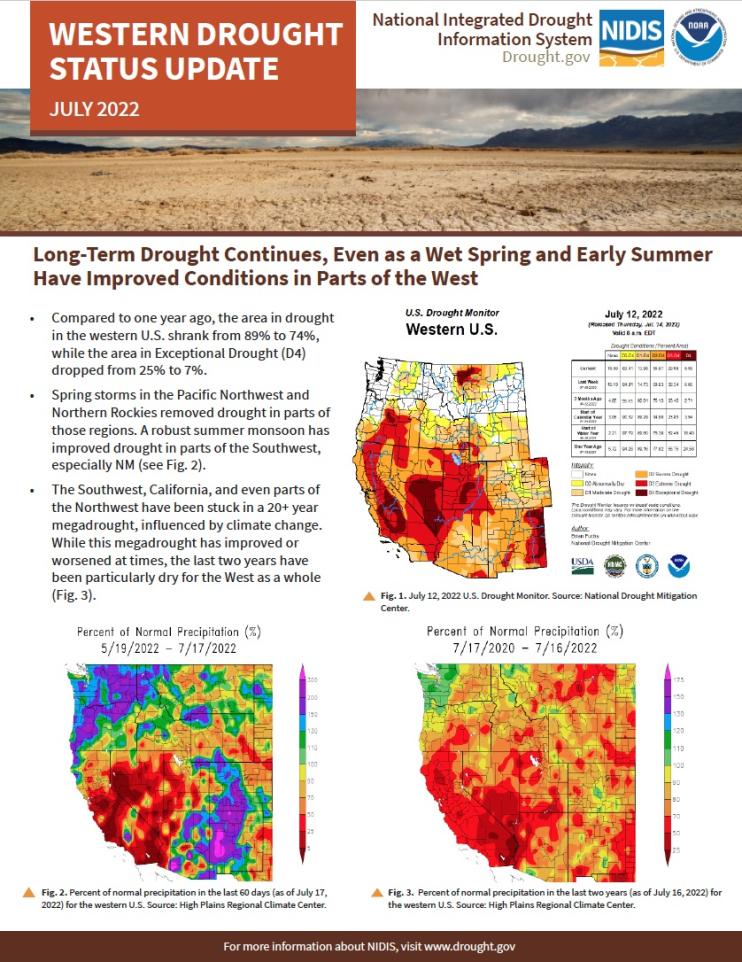For the latest forecasts and critical weather information, visit weather.gov.
The purpose of the 2022 Pacific Northwest Water Year Impacts Assessment is to summarize the water year conditions and sector impacts as a resource for future management of drought and other climate extremes.
On October 19–20, 2022, the National Integrated Drought Information System (NIDIS) and the University of Nebraska Medical Center co-led the Pacific Northwest Drought and Human Health Workshop in Portland, Oregon. The workshop was intended to identify gaps and needs, opportunities for collaboration, and ways to integrate the health sector and existing drought activities.
Quarterly Climate Impacts and Outlook for the Western Region for September–November 2022. Dated December 2022.
Quarterly Climate Impacts and Outlook for the Western Region for June–August 2022. Dated September 2022.
Temperatures were above normal across the entire West with many long-term stations in the top five warmest summers on record. Most of the West saw near-normal or above-normal precipitation this summer.
Compared to one year ago, the area in drought in the western U.S. shrank from 89% to 73%, while the area in Exceptional Drought (D4) dropped from 25% to 7%. Spring storms in the Pacific Northwest and Northern Rockies removed drought in parts of those regions. A robust summer monsoon has improved drought in parts of the Southwest, especially western New Mexico. The Southwest, California, and even parts of the Northwest have been stuck in a 20+ year megadrought, influenced by climate change.
Quarterly Climate Impacts and Outlook for the Western Region for March–May 2022. Dated June 2022.
Temperatures were below average across the Pacific Northwest, northern California, and the northern Great Basin. Dry conditions persisted across the Southwest with record low spring precipitation in parts of Nevada, California, Utah, Arizona, and New Mexico.










